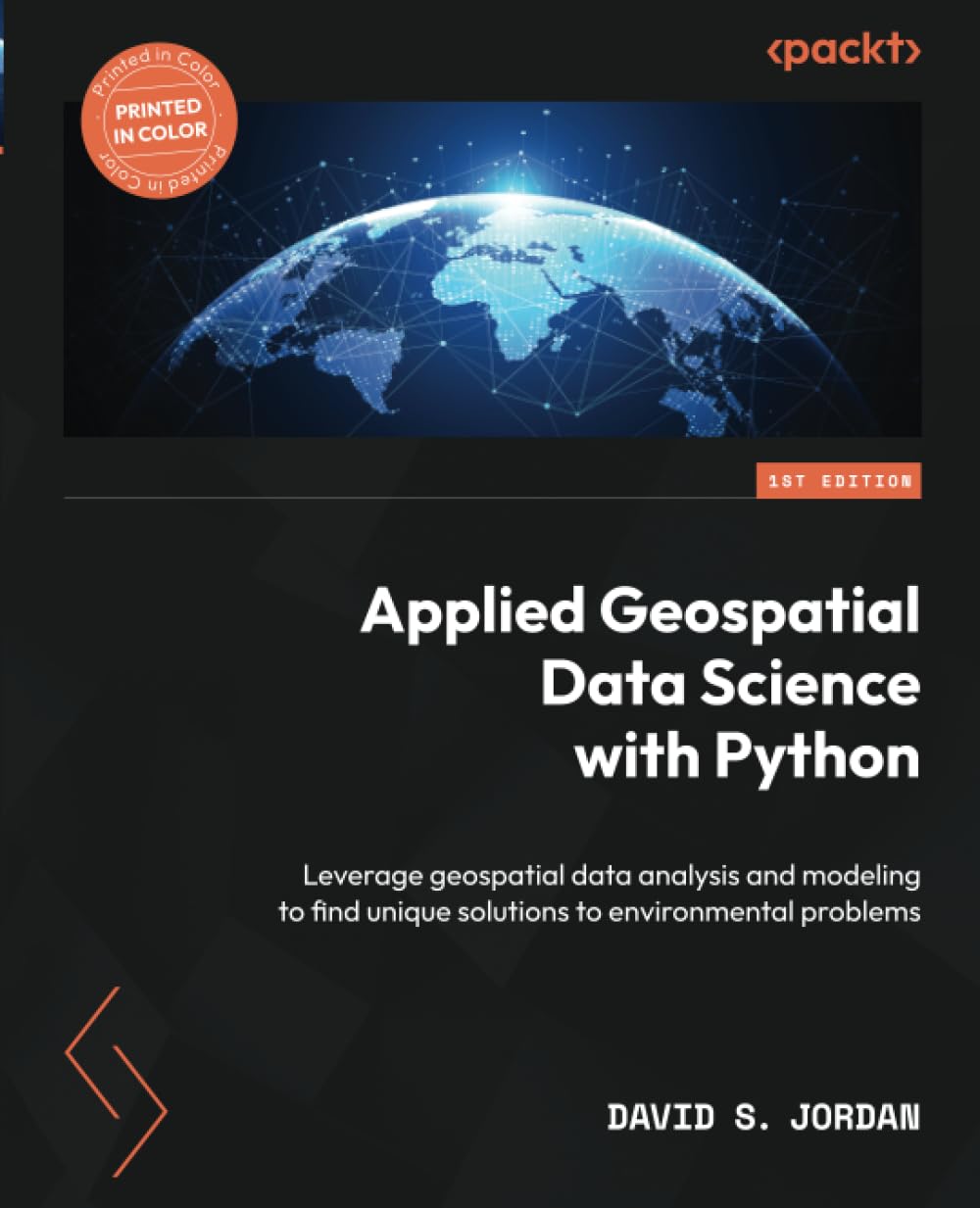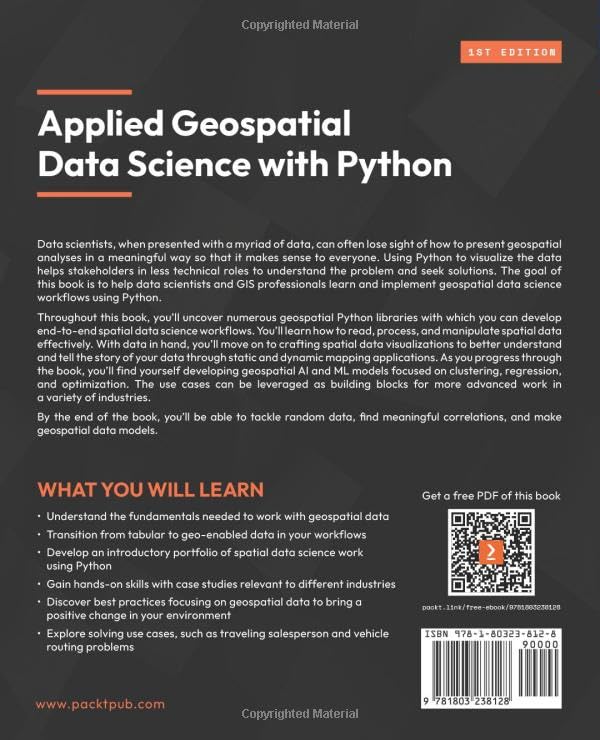Customer Services
Copyright © 2025 Desertcart Holdings Limited
Desert Online General Trading LLC
Dubai, United Arab Emirates



Applied Geospatial Data Science with Python: Leverage geospatial data analysis and modeling to find unique solutions to environmental problems
A**S
Great material for the novice or the expert
I especially like the treatment of ethical issues in GIS as well as the easy to understand visuals. Great book.
J**D
Easily one of the best Python & geospatial books to date
"Applied Geospatial Data Science with Python" is a wonderful book. It clearly describes the geospatial ecosystem to date and delves into some advanced topics on analysis. Whether you are an aspiring data scientist, a researcher, or a seasoned professional, this book will undoubtedly expand your skillset. My only critique would be that it doesn't focus as much on raster analysis.
O**S
Mastering Geospatial Data Science Workflows with Python
Applied Geospatial Data Science with Python is a must-read for data scientists and GIS professionals seeking to incorporate spatial thinking into their workflows. The book provides a comprehensive guide to developing end-to-end spatial data science workflows using Python.The book starts by introducing geographic information systems and geospatial data science, followed by a discussion of geospatial data and coordinate systems. It then dives into exploring geospatial data science packages and developing data visualizations. The book also covers important topics such as hypothesis testing, spatial randomness, feature engineering, spatial clustering, regionalization, regression modeling, and optimization.What sets this book apart is the practical approach it takes, providing readers with case studies and code samples that can be reproduced and expanded. The book also emphasizes best practices in geospatial data science, giving readers the tools they need to develop an introductory portfolio of spatial data science work using Python.Overall, "Applied Geospatial Data Science with Python" is an excellent resource for anyone looking to gain hands-on skills in geospatial data science. With this book, readers will gain a solid foundation in working with geospatial data, learn how to transition from tabular to geo-enabled data, and develop skills that are applicable to a variety of industries.
Y**N
Highly recommend it!
Confronted with an abundance of data, data scientists often find it challenging to convey geospatial analysis in an easily understandable manner for a broader audience. By employing Python for data visualization, those in non-technical positions can more effectively comprehend the problem and seek solutions.This book is designed to assist data scientists and GIS professionals in mastering geospatial data science workflows with Python. As you explore the book, you will encounter numerous geospatial Python libraries, facilitating the development of comprehensive spatial data science workflows. You will learn how to read, process, and manipulate spatial data effectively. Utilizing this data, you will proceed to create spatial data visualizations, enriching comprehension and narrating the data story through static and dynamic mapping applications. As you progress, you will build geospatial AI and ML models focused on clustering, regression, and optimization. These use cases can act as starting points for more advanced projects in a range of industries. Upon completing the book, you will be equipped to manage random data, pinpoint significant relationships, and construct geospatial data models.I highly recommend this book!
G**O
Great content!
Nice title this Applied Geospatial Data Science with Python.The book is very good, and it explains the subject from the beginning, teaching what is GIS (geographic information systems), explaining the different types of files for Geospatial analysis, and then introducing us to how to work with that kind of data in Python.The author also covers the statistical side of the matter, explaining how to construct a hypothesis testing, featuring engineering, as well as how to develop geospatial models.This is a very complete book that I recommend to anyone who is interested in Geospatial analysis.
T**7
Great Book for Beginner
As someone who has never dealt with Geospatial data, the book gave me a great introduction to several concepts such as GIS, utilizing geospatial data, and geopanda. The book explores deeply how to use the concepts and provides various examples. Lastly, the book also mentions geospatial data analysis applications such as vehicle route optimization and spatial clustering which were interesting to read.
A**R
Great book to do geospatial analysis using Python libraries
This book starts with explaining what GIS is and how a data scientist could leverage geospatial data to map and visualize them. In second part the book explores python packages such as geopanda to deep dive into geo data analysis. In third part the book discovers real examples of related geospatial analysis such as vehicle routing optimization and spatial clustering.
A**R
You have no idea how lucky you are that this book exists...
... because its value is not just because it's a guide with beautiful (COLOR!) illustrations and extremely helpful python code. Much of its value is allowing users to get the most out of models that leverage geospatial data at all.Let me give a silly example that illustrates the point. Page 26 on my version explains FIPS codes. That's helpful- but most people don't even know that FIPS codes exist, let alone that they are the system that the U.S. Census uses to identify geography.The book separates out FIPS vs. other types of codes, but goes beyond that. It actually breaks out not just the meaning of the code, but explains the hierarchy:- Nation- Region- Division- State- County- Census tract- Block group- BlockThat hierarchy for organizing addresses is stunningly useful for modeling any kind of human behavior modeling, including response models, fraud models, etc. The hierarchy itself helps organize thinking and modeling approaches.Also in the book:- Exploratory spatial data analysis- Geospatial cases studies (I love case studies!)- Package reviewsPlease enjoy!
Trustpilot
2 weeks ago
1 month ago